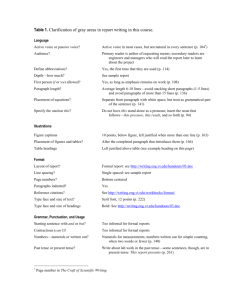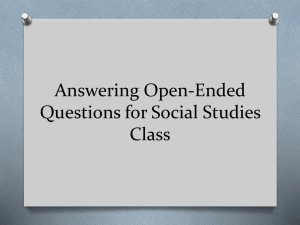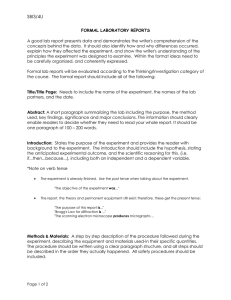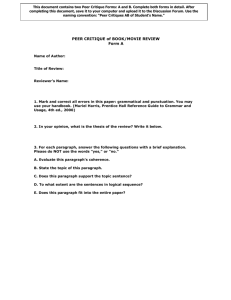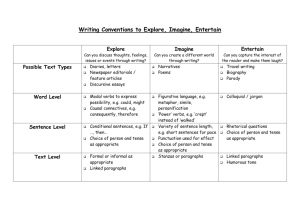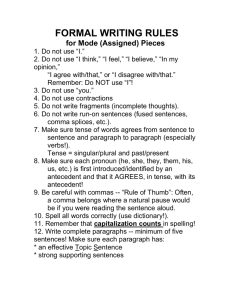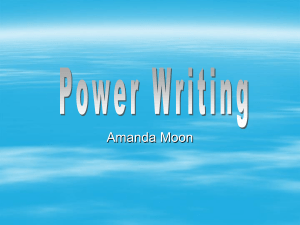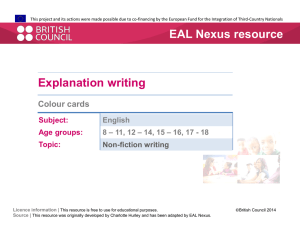The Literary Present - Mrs. Lee`s Classroom
advertisement
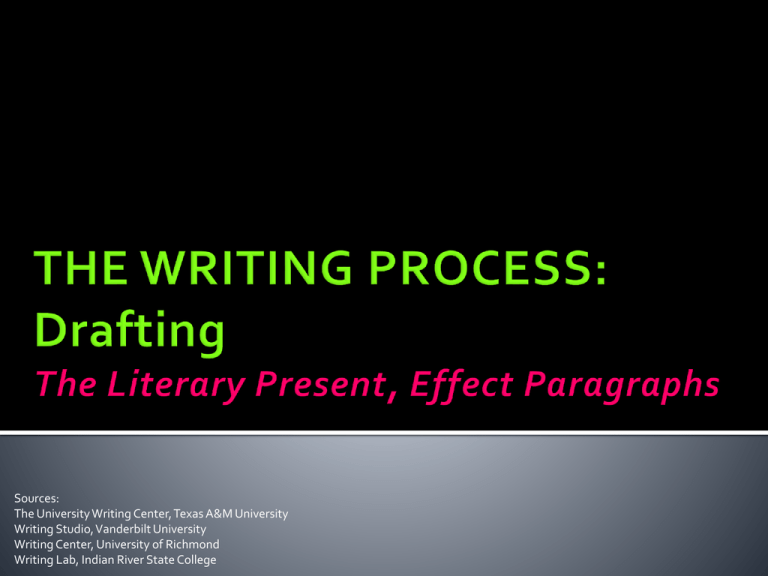
Sources: The University Writing Center, Texas A&M University Writing Studio, Vanderbilt University Writing Center, University of Richmond Writing Lab, Indian River State College Use the present tense when writing about literature Characters Plot events This also includes the Bible, artwork, and movies We write about literature as if the events in the book are happening now, even though the authors may be long dead. At the end of Of Mice and Men, Lennie sees an enormous rabbit that scolds him, making him think of George. In “The Story of an Hour,” Mrs. Mallard whispers “free, free, free!” after learning of her husband's supposed death. Literature is assumed to exist in an eternal present. Every time you open a book it seems as though the events are currently happening. Every time you read an essay it is as though you are currently speaking to the writer. “How (and Why) Do I Write in Literary Present Tense?” ▪ Source: Vanderbilt’s Writing Studio Paragraphs are blocks of text that organize information Typically, a paragraph should contain one idea Topic sentence Evidence/Support Effective paragraphs contain unity and coherence A unified paragraph will have a clear focus No tangential or off-topic material Coherence: Every sentence should somehow be connected to what has come before, yet also move the reader forward with new information. Repetition Repetition of the same word shows lack of imagination Use “elegant variation”: the same idea that is reworded ▪ Civil War: war between States, prolonged conflict, hard-fought war Transitional words and phrases (See handout) Consistent point of view and tense Maintain a single perspective (i.e. third person) Keep verbs in the same tense There’s no hard and fast rule about when to start a new paragraph: it’s up to the writer. Basic guidelines: To introduce a new idea To emphasize a point To break complicated info into smaller segments To create a transition between key ideas Paragraph length varies greatly In general, paragraphs these days tend to be shorter than they once were Ultimately, the deciding question isn’t how long the paragraph is, but how compelling it is. If it feels skimpy and not persuasive, it needs more info.
